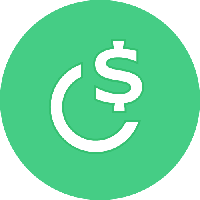

سعر OpenWorldOPEN
بياناتOpenWorldالرئيسية
سعر OpenWorld الحالي اليوم بعملة EGP
نبذة حول OpenWorld (OPEN)
OpenWorld Token: مستقبل تمويل الألعاب على البلوكتشين
فهم تمويل الألعاب على البلوكتشين مع OpenWorld Token
في العالم الرقمي المتقدم، لم تعد الألعاب مجرد وسيلة للترفيه بل أصبحت أيضاً منصة للعمل والتجارة والتقنية. مع تطور تكنولوجيا Blockchain، أصبحت الألعاب أكثر تطوراً وتحقيقًا للربح من أي وقت مضى. يقدم OpenWorld Token نظامًا لتمويل الألعاب يسمح بإمكانية حقيقية للاستثمار والتصميم والتطوير.
توكن OpenWorld: الرمز الرقمي للألعاب
تعتبر الرموز الرقمية مركزية في مجال الألعاب على البلوكتشين. OpenWorld Token هو رمز تمويلي يتم استخدامه في المشاريع اللعبية على مجموعة متنوعة من المنصات. هذا الرمز متوافق مع المعايير الرئيسية، مما يجعله ذو قيمة كبيرة للمطورين والمستثمرين على حد سواء.
الرؤية النقدية والاستثمارية للـ OpenWorld Token
من خلال التمويل المباشر للألعاب، يسهل OpenWorld Token إمكانية الدخول لأي شخص يرغب في الانضمام إلى صناعة الألعاب. يمكن للمطورين والمستثمرين الاستفادة من الرمز لخلق فرص جديدة وتعزيز التعاون.
القوة الدافعة وراء الـ OpenWorld Token
يبنى OpenWorld Token بيئة مستدامة تعتمد على نيتواكينوميكس متكامل والميكانيكا المالية، والتي تعمل معاً لخلق جدارة استثمار مستقرة.
بإيجاز، يمثل OpenWorld Token بيئة قوية ومتنامية تستخدم الكتلة لدفع إمكانيات تمويل الألعاب إلى أقصى حد. بفضل رؤيته المستقبلية وقوته الدافعة، يتقدم هذا الرمز نحو تغيير وجه صناعة الألعاب وتحويلها إلى منصة اقتصادية. ومن المتوقع أن يستمر بنموه وتوسعه مع توسع البلوكتشين والرموز الرقمية.
تقرير تحليل الذكاء الاصطناعي حول OpenWorld
التنبؤ بسعر OpenWorld
ماذا سيكون سعر OPEN في 2026؟
ماذا سيكون سعر OPEN في 2031؟
العروض الترويجية الرائجة
الأسئلة الشائعة
ما السعر الحالي لـ OpenWorld؟
ما حجم تداول OpenWorld على مدار 24 ساعة؟
ما أعلى مستوى على الإطلاق لـ OpenWorld؟
هل يمكنني شراء OpenWorld على منصة Bitget؟
هل يمكنني تحقيق دخل ثابت من الاستثمار في OpenWorld؟
أين يمكنني شراء OpenWorld بأقل رسوم؟
مقتنيات OpenWorld
OpenWorld مصفوفة توزيع المقتنيات
OpenWorld المقتنيات حسب التركيز
OpenWorld من العناوين حسب الوقت المحتفظ به

أسعار العملات المشفرة ذات الصلة
أسعار العملات المُدرجة حديثًا على Bitget
كيفية شراء OpenWorld(OPEN)

أنشئ حسابًا مجانيًا على Bitget

تحقق من حسابك

تحويل OPEN إلى EGP
شراء المزيد
أين يمكنني شراء OpenWorld (OPEN)؟
قسم الفيديو - التحقق السريع والتداول السريع!

OpenWorld من التقييمات
معلومات إضافية حول OpenWorld
نظرة عامة على العملة
متعلق بالعملات
متعلق بالتداول








